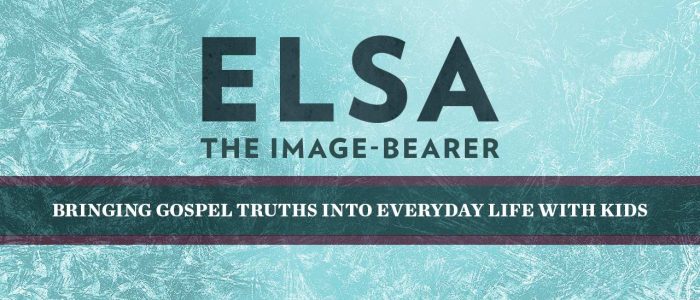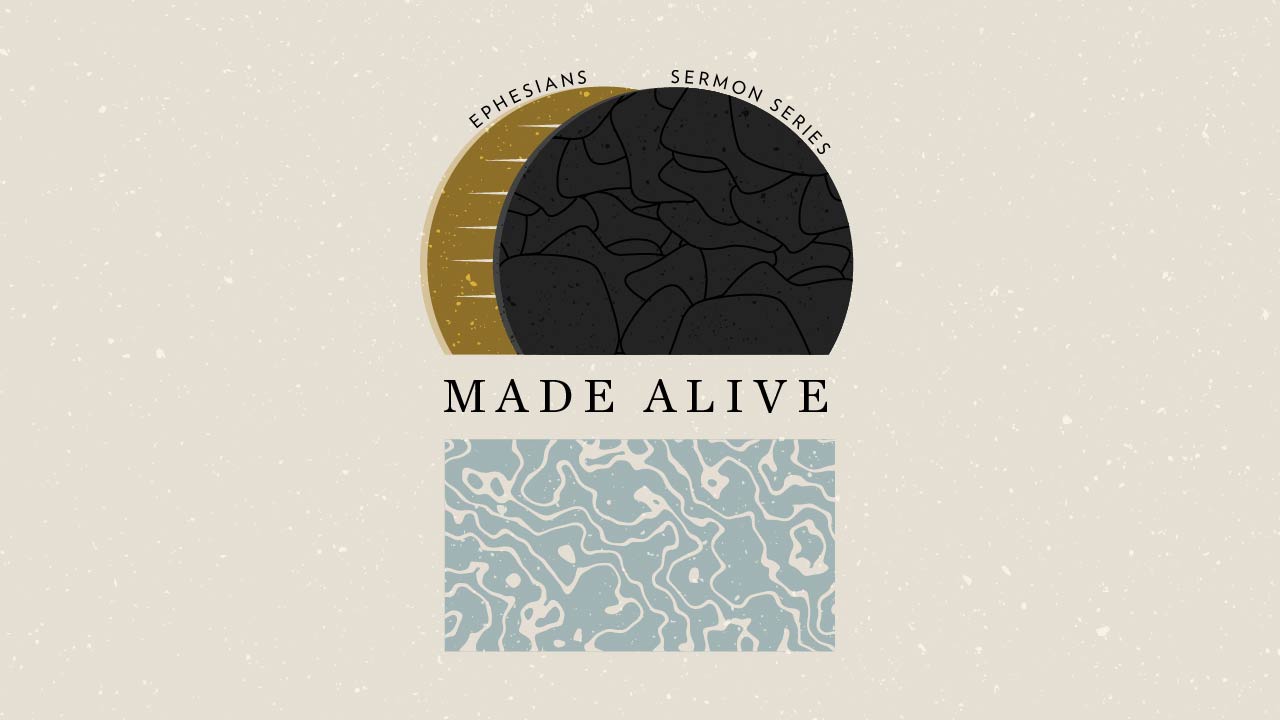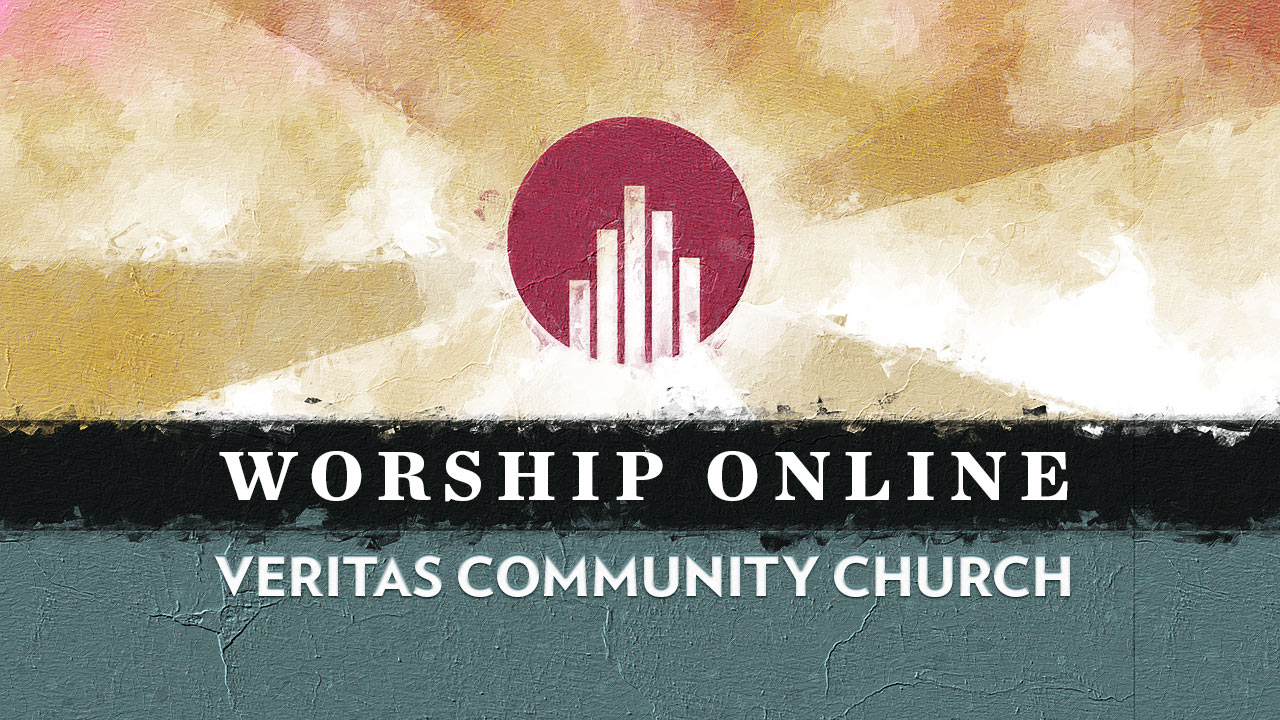Elsa the Image Bearer: Bringing Gospel Truths into Everyday Life with Kids
By Melissa Davis
Social Distancing Silver Linings
In this strange season we are all searching for ways to connect with others. Even our children are inventively discovering new platforms for communication. On one such occasion I found my five and four year old son and daughter with their heads buried under our front windows, ears pressed against the screen. My husband and I paused to ask them what they were doing when we heard it. “Ah ah ahhh ah” came the high-pitched, sing-songy voice from down the street. My son replied first, “ahhhh ah ah ahhhhh!” His scream-yell rang down the road. The little Aurora called back and my husband and I burst out laughing and then grabbed a phone to document the moment. These are the times we want to remember from the COVID-19 pandemic. Watching Frozen II for the fifth time has its silver linings. Our children were able to “call” their neighborhood friends.
An Idol to the Unknown God
When I took my four-year-old to her first movie theater this fall I had unexpectedly fallen in love with the sequel to the already good Frozen storyline. Like all good stories it drew me into marveling at the many aspects that pointed toward The Story, God’s story. In fact, I left imagining how Paul might have spoken to the audience if he had been there that day; how he might have engaged with them like he once did with the Athenian philosophers in Acts 17. “People of the West,” he might say, “I perceive that in every way you are very spiritual. I walk through the marketplaces and see the idols you erected in honor of these master storytellers, and I have heard the good news they proclaim. You recognize that all creation is groaning and awaiting the glorious day of its recreation. You have seen that earth, wind, fire, and water must be controlled by someone who is powerful, someone who is just, someone who is benevolent. You know that there must be someone who is both human and divine who pulls heaven and earth taut together, tethering them in eternal harmony. Let me tell you the real story.”
The Gospel Imbibed in Imager-Bearing
Genesis one opens all of scripture with a sweepingly beautiful tale of God’s matchless majesty and creativity. The Lord God speaks the cosmos into being. From him come light and life. He separates and divides, provides order and purpose, gives a declaration of goodness to all he makes.
Then, the patterning, the poetry, the symmetry of the story interrupts itself and God says, ‘Let us make humanity in our image, after our likeness.” (Read Genesis 1:26-28). In a shout, in a rhythm of greatest kindness the God-King crafts his image and places it under the canopy1, inside the first tent of meeting. These image bearers are to be royal overseers of the earth. They are to steward it and have dominion over it with the same benevolent hand he would use if his outstretched arm were made of flesh
They are also made in his likeness. They are as like him as a son is to his father. They are ever relationally tied to their parent in heaven. The fullness of this enclosure of delight is theirs to dwell in and cultivate. They are to make it fruitful, to expand it, to multiply it. This is how they will display what is already true of them– they are the image and likeness of Elohim, High King and Majesty of All.
But, when the shrewd one sneaks into this enclosure of delight and invites God’s image bearers to pursue ruling over creation by their own authority these image bearers commit treason. Inside the original Holy of Holies they declare that they will rule the garden their own way. Until this pinnacle moment God alone has pronounced what is “good.” Now man and woman seek to know good and evil apart from the perfect law of the Lord.
We find ourselves complicit in this act. We are born with the nature of a ruthlessly independent judge over what we perceive to be good and evil. We have not lost our drive to have dominion over creation; but, now we wield a heavy hand and use creation to build our own kingdoms instead of cultivating the sanctuary of our God. We have not lost our drive to relate to the King of Creation; only now, we seek to control him as a genie from whom we demand pleasant weather, health, power and security because we are the gods and he is our servant.
The image of God is marred across all humanity. All creation knows its need for a perfect image bearer to reign over it again. And so, thousands of years after the first man and woman staged a coup in God’s own garden, the Spirit of God overshadowed a new Eve, named Mary. In her womb she carried the “image of the invisible God.” The outstretched arm of God took on flesh and began the work of making all things new. This man, Jesus of Nazareth, is one with God in Heaven; “true God from true God… begotten, not made2.” He displays his dominion over creation, eradicating disease, banishing demons, calming storms, cursing fig trees, and calling fish up out of the sea. He reaches out to his fellow humans and he makes enemies into allies. He takes on flesh for them, he is born, he lives, he dies, he is resurrected, he ascends to the right hand of the Father as the royal representative and perfect image bearer. He is God the Son, Son of Man, the God-Man. He is Jesus Christ the Lord.
This new kind of image bearer, this new kind of human, this resurrected one, this seed of the woman saves us from our own rebellion as he lovingly takes on the tidal wave of wrath directed at us and exchanges it with the blessed righteousness he has earned on our behalf. He fulfills the Genesis 1:28 Cultural Mandate and gives those being conformed to his image a renewed mandate to go and do likewise (read Matthew 28: 19 & 20).
The Gospel According to Frozen II
The Frozen II storyline centers around the lingering questions we have about the source and purpose of Elsa’s magical powers. At the very beginning the audience is introduced to a strange but alluring voice that seems to be calling to Elsa. The inciting action carries the story forward when the queen sings her dynamic ballad, “Into the Unknown.” The classic Abrahamic quandary of being called to go to a place that is unknown (Genesis 12:1-2), reveals that Elsa knows she must respond to this call, that she must follow the mysterious voice, yes, into the unknown. She first starts to warm to the idea when she sings, “Or are you someone out there who’s a little bit like me? / Who knows deep down I’m not where I’m meant to be.” Then, the song peeks with the words, “Where are you going? Don’t leave me alone. / How do I follow you/ Into the unknown.”
This is such a human experience. Maybe we don’t all sing from the tops of cliffs or set ice crystals off across an entire city; but, the undertones of the experience are so deeply wired into image bearers. Even from a young age we all have a sense that there is some greater calling on our lives. There is something we ought to be doing. There must be a reason why I am here. Everyone asks this– inwardly or audibly– at some point in their lives: Why am I here? We wonder if there is someone out there a little bit like us who could tell us what we were made for and what our purpose in life should be. Deep down we all want to follow the one who calls to us, even if he calls us into the unknown.
And so, Elsa goes. She follows this calling through tumultuous adventures in an enchanted forest. There are many wonderful tid-bits of talking points along the way. We could pause to talk about our interdependence and brotherly-sisterly relationships; we could talk about Olaf’s sweet song that helps us to better empathize when children experience fear and how adults should fess up when we experience anxiety because, in reality, none of us are the all-knowing God of the universe and this won’t just all make sense when we are older; but, we’ll keep our eyes fixed ahead on understanding the idea of image-bearing right now.
The next big moment for Elsa is her journey into Ahtohallan. Finally astride her water horse, Elsa crosses the North Sea and arrives at the glacerious cave. She sings out the invitation “Show Yourself” only to step onto center stage between water, fire, wind, and earth to discover that it was she who was made with this balancing purpose– a purpose outside of and greater than herself. Embracing this, she walks right past the old Elsa who sang, “A kingdom of isolation and it looks like I’m the queen,” and on into the depths of Ahtohallan to sacrifice herself for the the sake of releasing the truth into the world, because the truth will set all those whom she loves free.
After singing a song that navigates the depths of depression better than most books have tried and failed to do, Anna “does the next right thing” and, in turn, frees Elsa from the icy bottoms of Ahtohallan. This happens just in time for Elsa to realize the purpose of her powers to the fullest. The people of Arendelle have grown accustomed to Elsa’s power bringing small luxuries to their kingdom, but never before has this unique identity of hers been the source of their survival. As the waters of wrath, full of the sins of their ancestors, race toward the entire population of Arendelle, Elsa comes chasing after them. She runs right through the water, emerges unscathed, and faces the biggest wave head-on. Absorbing it all but displaying that she was absolutely called to take it, she banishes the punishment by turning the wave of wrath into ice and watching it crumble at her feet. The city is saved and all the people breathe a heavy sigh of relief.
Without even meaning to do such a gloriously good thing, the creators of Frozen have revealed to their audience all at once their need for a savior and the answer to that deeply felt question, “Why am I here?” As the waves settle around Queen Elsa and she lovingly gazes up at the citizens on the cliff above, the audience watching the movie has just witnessed a Christ-type in pop culture. There are two things that every human innately knows of themselves. One, as we mentioned before, is that there is a reason for their existence that is greater than they can surmise. The second is that the waves of wrath are coming for them and they truly do deserve it. The sins of their ancestors aren’t really all that separated from them. We are complicit in the sin of the garden and are just individualizing and personalizing our own form of renegade rebellion with every step we take. Yes, the wave of wrath should sweep over us, but when someone who does the work we were created to do with such power and perfection that it stops the wave, what then?!
Here’s the thing we often forget but desperately need to remember about the Gospel in order to let it answer the question, “Why am I here?” Jesus stood in the gap for us; he ransomed us from the penalty and power of sin, and death, and Satan. By the blood of the cross we are transferred from the kingdom of darkness to the kingdom of the “Beloved Son” where we are free and safe from wrath. But, Jesus didn’t just stand in the gap for us because that alone was the plan. Jesus was raised up on a cross as the only true human. He alone fulfilled the call to be an embodied person who lived all of his life in accordance with the identity of displaying the image and likeness of his Father in heaven while he was on earth. And so, in examining his incarnation, life, ministry, death, resurrection, ascension, and heavenly session, we see in him what we are meant to be as resurrected humans. When we look lovingly on the resurrected crucified king, we see the image to which we are being conformed. Jesus Christ gives birth, by the blood of the cross, to an entirely new family of humans who rule and subdue by doing the benevolent handiwork he has prepared for them. They multiply themselves as they share their source of life and light with all around them by the very words of his Gospel.
Teach them diligently to your Children
Much of the call to parenting through this quarantine is that of making wise, moment-by-moment decisions that demonstrate love of God and love of neighbor. In this unique stage of life, probably more than ever before, we are called to remember that our children are our closest neighbors. Decisions such as how to encourage their now interrupted friendships, be the primary source of their schooling, mediate conflict between siblings, and monitor screen time feel increasingly more exhausting and unending.
My hope in writing this is not to encourage you to watch Frozen II or to point out some neat Biblical parallels, but rather that you and your children would see that so much of what we love about this story and the character of Elsa is that it points us toward our story in the gospel and our purpose as image bearers of God.
Footnotes
[1] This is a suggested translation for the Hebrew word, רָקִיעַ, which reads as “expanse” in the ESV
[2] Nicene Creed




Beautifully written and deeply inspiring!
Thank you for making the gospel clear and tangible in this article!